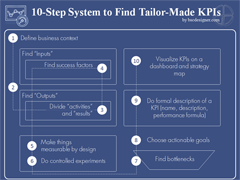This indicator is for measuring the average number of training hours per employee. This KPI is calculated by divided the total number of training hours undertaken by employees by the number of employees that have been trained, in a given time period.
This KPI is a great tool for many strategies, and key for measuring the performance of how well the company is doing in developing its workforce.
For instance, a company that is trying to restructure may make a strategic plan to train its employees in self – service activities and make their skills more transferable, which will eventually better the work they perform for the business, and lower the costs. The HR team may have forecasted that an x amount of training hours will be needed per employee to reach the desired level of skills.
Moreover, this KPI can also be used to calculate the Cost per training hours, if joined with the L&D budget KPI (or Cost of Training KPI), or it can be included in promotion information to gain competitive advantage when recruiting.
Formula:
Total number of training hours / total number of employees
KPI Unit: number
KPI Time Frame: update annually
The average number of training hours per employee gives a clear figure of how much effort the company is putting into developing its workforce. On average, the companies that score higher in this KPI tend to have a higher performance rate.
For instance, if in one year Company A, B and C (medium size, ~400 employees) had the following figures:
Company A: 10h a year per employee
Company B: 20h a year per employee
Company C: 40h a year per employee
Taking as a for instance: In the situation of a budget cut, when the company had to lay off admin staff and introduce a self-service policy (where all employees sort out their travel expenses, add on the calendar their annual leave, managers schedule their own meetings etc.).
Company A is likely to struggle as relatively no time was given to train staff in IT, line management etc.
Company B could cope with the change but not all employees may be able to successfully use the company’s systems.
Company C spent a high budget on training, where all employees have been trained in all company’s systems, and absolutely everyone (executive to admin staff) were proficiently trained in using the IT systems. Therefore, the change was smooth and all staff members were able to book travel, plan meetings etc.



